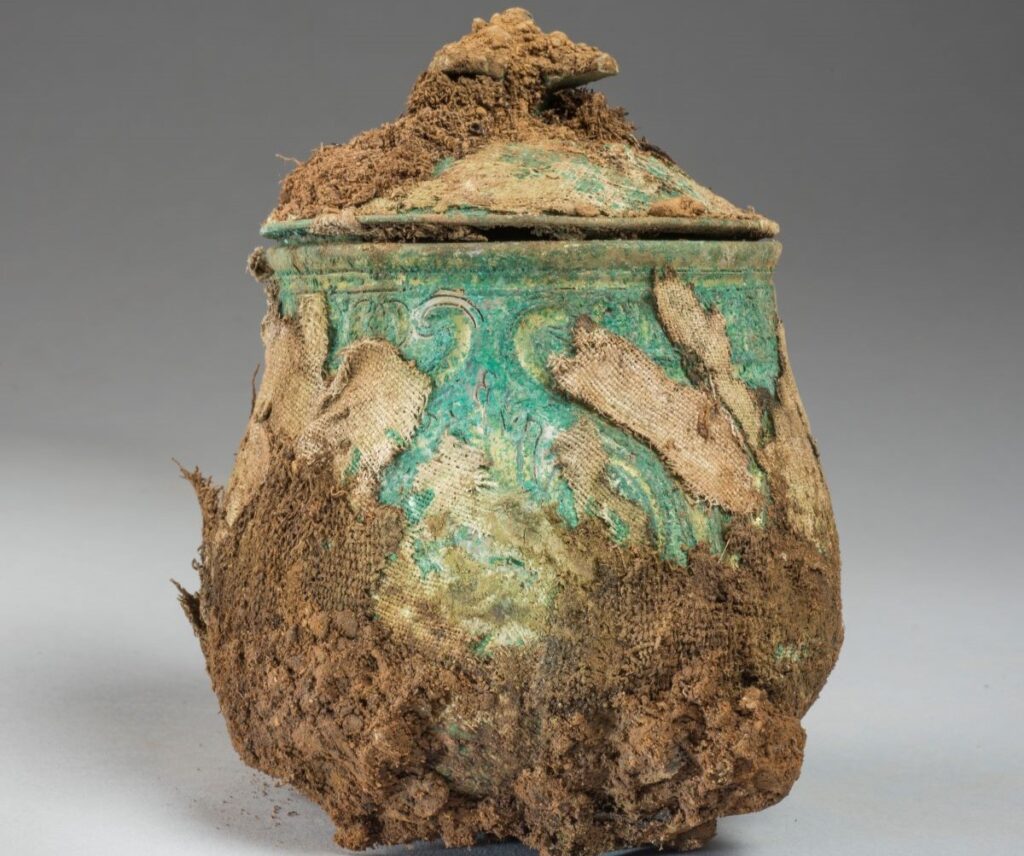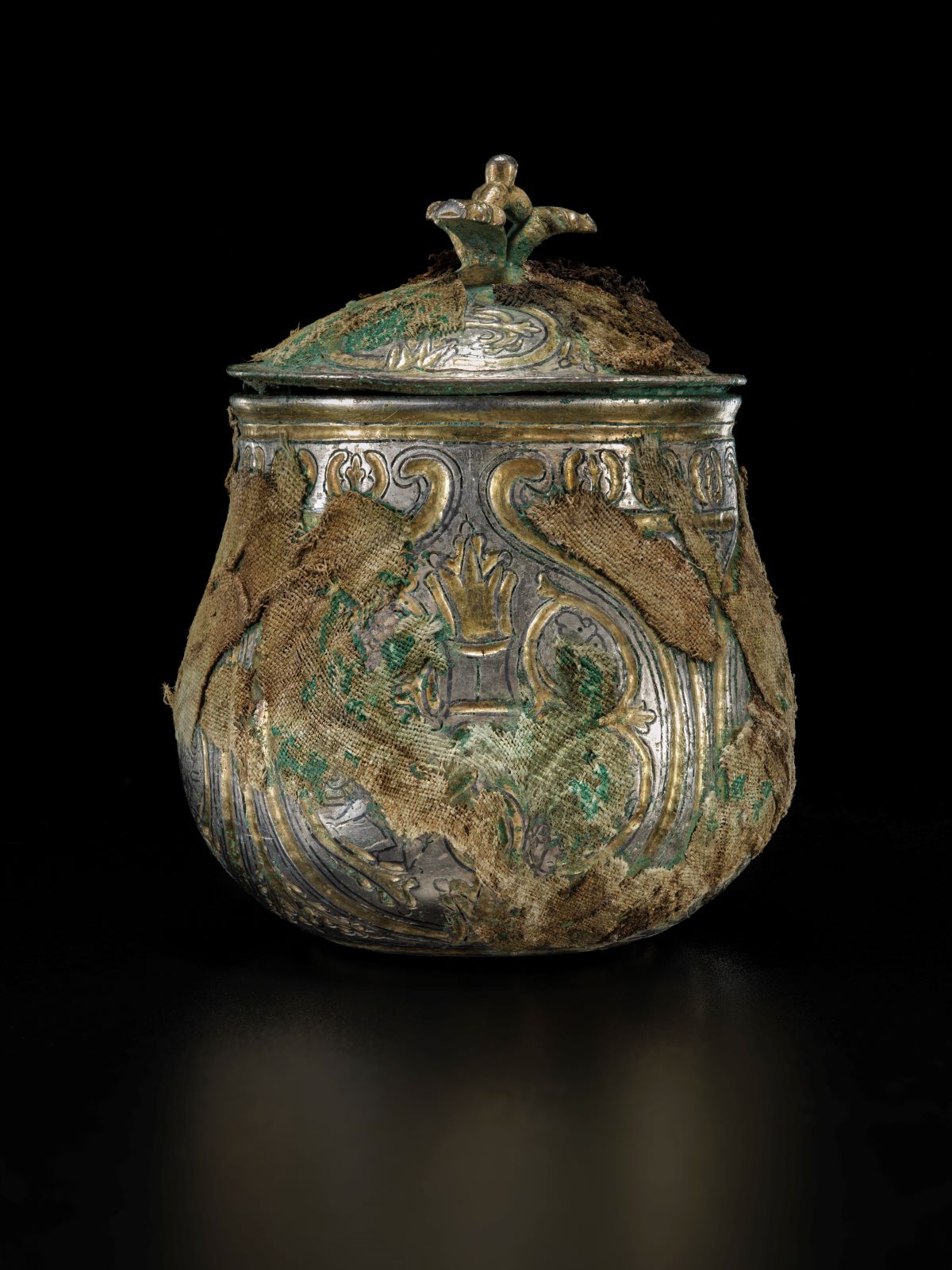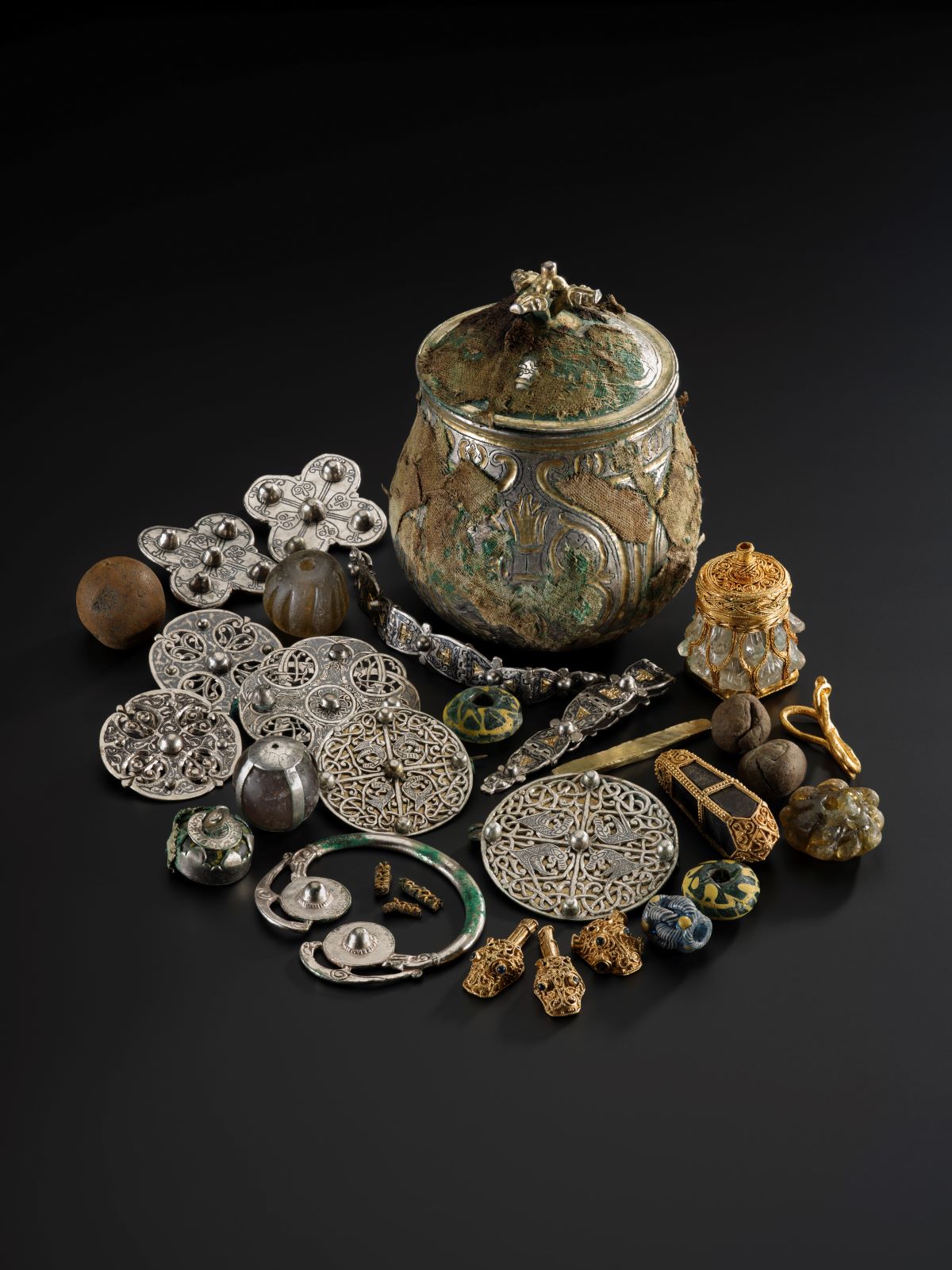
Viking-age treasure from Galloway Hoard travelled half the world to Scotland
Ten years after the discovery of the Viking-age Galloway Hoard in south Scotland, experts have revealed that part of the collection came from West Asia.
Metal detectorist Derek McLennan found the collection – described as one of the most important UK archaeological finds of the century – in 2014.
Experts said a lidded silver vessel which contained many of the treasures that comprise the hoard is originally from what is now central Iran and was transported halfway around the world more than 1,000 years ago.
When the vessel was first discovered, it was still wrapped in its ancient textiles, which is extremely rare, and meant that the surface could at first only be seen through X-ray scans.
Its textiles have now been partially removed and preserved, and the vessel has been cleaned using lasers which removed any green corrosion and revealed details of the design, including crowns, fire altars, leopards and tigers.
This imagery is unusual in western Europe and suggests an association with the iconography of Zoroastrianism, the state religion of the Sasanian Empire, the last Iranian empire before the early Muslim conquests of the 7th–8th centuries AD.

The lidded vessel from the Galloway Hoard. Credit: National Museums Scotland
New scientific analysis has confirmed that materials used to make the vessel originated in what is now central Iran.
‘We had suspected from x-ray scanning the vessel that it may have originated somewhere in central or western Asia, but it’s only now that we’ve carefully conserved and analysed it that we can say this is definitively the case,’ Dr Martin Goldberg from the National Museums Scotland said.
‘It’s further evidence of the cosmopolitan make-up of the Galloway Hoard.
‘We now know that the Viking-age silver that makes up most of the Hoard was melted down from coins and metalwork from early medieval England.
‘Some objects, like the lidded vessel, stood out from the rest and the scientific analysis now confirms this.
‘It is incredible to imagine how the vessel made its journey halfway round the known world, from Iran to this distant corner of southwest Scotland.’
The artefact from about 900AD is set to go on public display for the first time next week, on loan to the British Museum’s upcoming Silk Roads exhibition in London.
Other objects from the Galloway Hoard will go on long-term display at the National Museum of Scotland in Edinburgh, while a portion will go on show at Kirkcudbright Galleries.
‘We’re delighted that visitors to Silk Roads will be the first in the world to see this key object from the Galloway Hoard,’ said Dr Sue Brunning from the British Museum.
‘Among its remarkable contents were Scotland’s earliest recorded silk, and so it is a highly appropriate inclusion in the exhibition.
‘For the first time it will be displayed alongside a similar vessel found in northern Britain and also used as a Viking-age treasure container, but the Galloway vessel is the only one confirmed as originating beyond Europe, in lands far to the east.
‘It was, itself, a long-distance traveller on the Silk Roads’ sprawling networks.’

The Galloway Hoard’s Viking-age treasures. Credit: National Museum
The Galloway Hoard contains the richest collection of rare and unique Viking-age objects ever found in Britain or Ireland.
Buried around the end of the 9th century, the Hoard brings together a stunning variety of objects and materials in one discovery.
While little can be said with certainty about who buried the Galloway Hoard and why, several discoveries from the conservation and research work have offered tantalising hints of the deeper history behind this collection, which probably accumulated over several centuries.
These include a Christian pectoral cross depicting symbols of the four evangelists, the runic inscription of the name ‘Egbert’ on a silver arm ring, and the revelation of a spectacular rock crystal jar decorated with gold filigree bearing the words ‘Bishop Hyguald had me made’.
Along with the West Asian origin of the vessel, the many unusual objects in the Galloway Hoard take us well beyond the usual stereotype of Viking raiders.
This Hoard tells us a richer story about complex interactions with neighbours and newcomers, connections with previous generations and the rest of the known world.
Read more Culture stories here.
Subscribe to read the latest issue of Scottish Field.
TAGS

